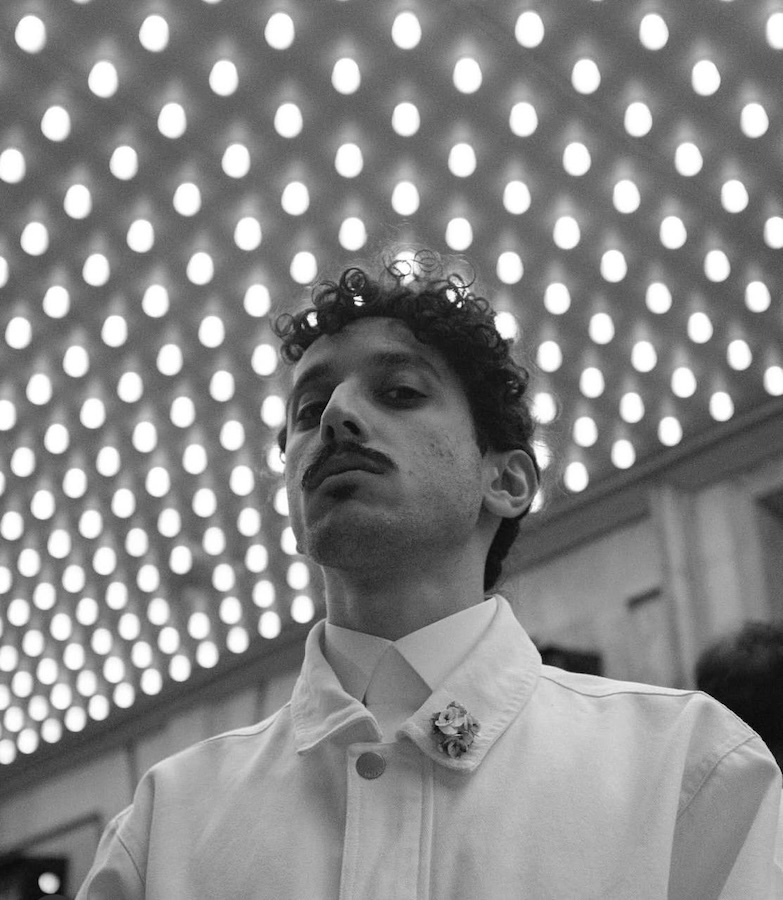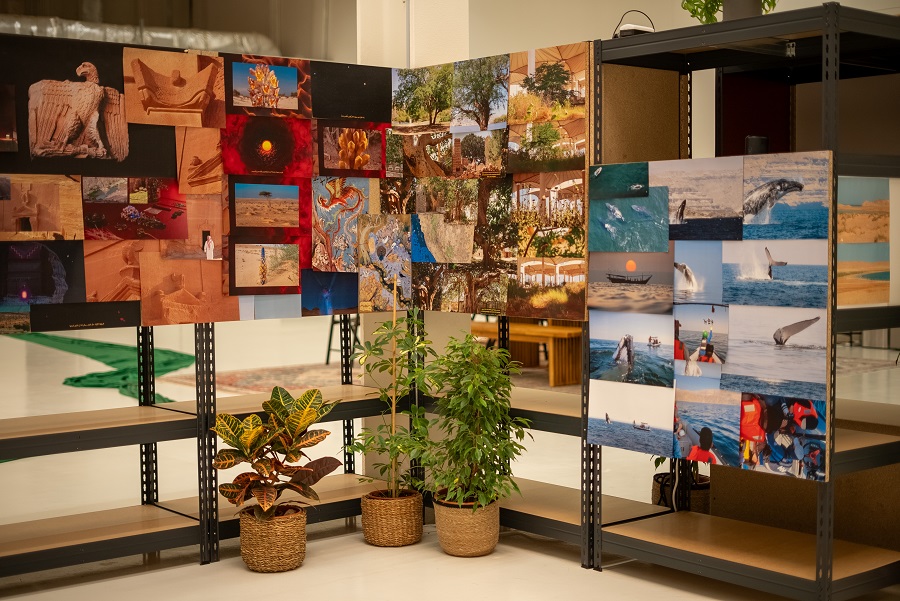ALULA: For the video of the latest track from his electronic music project Arabian Alien, Saudi filmmaker Meshal Al-Jaser headed to the heart of AlUla’s dramatic desert landscape. “Gunpowder” blends striking visuals with Al-Jaser’s signature surrealist touch.
The track, created with his bandmate Mohammed Alhamdan, explores themes of heartbreak and disillusion, using the raw beauty of AlUla to amplify its message.
“It’s about tragedy,” Al-Jaser tells Arab News. “It’s about someone who’s trying to cope with getting his heart broken.”

Meshal Al-Jaser. (Supplied)
The video has racked up more than 1.7 million YouTube views in the first month of its release, thanks to its arresting visuals, especially of the Hejazi war dance, tasheer, which involves firing rifles into the ground as the wielder jumps into the air, sending a dramatic display of fire and gunpowder under their feet.
“I was always fascinated by tasheer, in terms of visuals,” says Al-Jaser. “A lot of the tribes in Hejaz practice it. And, like many other Saudi dances, it really originates from trying to intimidate the enemy. With time, it became more of a celebratory dance that they do at weddings and such.
“For years, I really wanted to capture it the right way, because it requires a lot of elements to come together,” he continues. “What’s specifically fascinating about it for me is really the precision and the skills of the people that do it. You have to jump at the right time, point in the right direction, shoot at the right time and land at the right time. It’s not a simple dance. It requires a lot of skill.”

Shooting the video for 'Gunpowder' in AlUla. (Supplied)
“Gunpowder,” is an extension of Al-Jaser’s mission to capture the true essence of Saudi culture. “I don’t want to change anything in it or bend it around, as much as I just want to capture it in the way I view it,” he says.
Shooting against the towering sandstone cliffs and vast desert landscape of AlUla was also a treat. “I was really mindblown. It’s one of the most unique locations in the world. It’s very diverse. Every piece of it feels like a whole different world. So, when (Film AlUla) approached me (to shoot a video there), I already knew it was going to look good because of the environment,” Al-Jaser says. “One of the biggest challenges was that we only had two days to shoot it. We were just running around to really try to capture all the essence of the place, because it’s so different.”
From viral YouTube sketches to acclaimed short films, Al-Jaser’s work has challenged cultural taboos and reimagined Saudi identity through a satirical lens. His storytelling often explores the tension between tradition and modernity, mixing absurdity with sharp cultural commentary.

Al-Jaser's Arabian Alien bandmate Mohamed Alhamdan. (Supplied)
In 2023, Al-Jaser released his debut feature film, “Naga,” which boldly set out his signature style — provocative, surreal and unafraid to push cultural boundaries. The film, which premiered at the Toronto International Film Festival, is a thriller-horror hybrid set in a dystopian desert landscape. It follows a rebellious young woman named Sarah, who sneaks out to attend a secret party in defiance of her conservative father’s rules. But when she misses her curfew and tries to return home, her night takes a bizarre and terrifying turn.
“My ultimate dream was always to become a filmmaker and make feature films. So this was just a small step towards that,” Al-Jaser says. “It was very interesting. Anyone you know who has shot a feature film would tell you that it’s the hardest thing they’ve done, because, especially with the first film, you kind of want to do so much with so little, and it’s a whole different experience.
“I know it’s all directing and storytelling, but, really, the amount of effort it takes to make a feature film as opposed to a short film makes it feel like a whole different medium. So, my experience was very challenging, but at the same time, I also feel really privileged to have done my first feature with Netflix. It was nice for them to really believe in me. And for it to go to Toronto… I’m so thankful for that.”
Al-Jaser hopes to make his big-screen start as a filmmaker soon. “Hopefully I will make my cinematic debut, because ‘Naga’ was a streaming film,” he says. “I’ve never experienced my film in a cinema and that’s something I’m really looking forward to.
“I really am attempting to do the best I can. Of course, I feel the weight and the responsibility, since I’m one of the first generation of Saudi filmmakers, but I also feel the privilege of that,” he continues. “If I can stay focused — which is easier said than done — then hopefully everything will fall in the right place.”
























